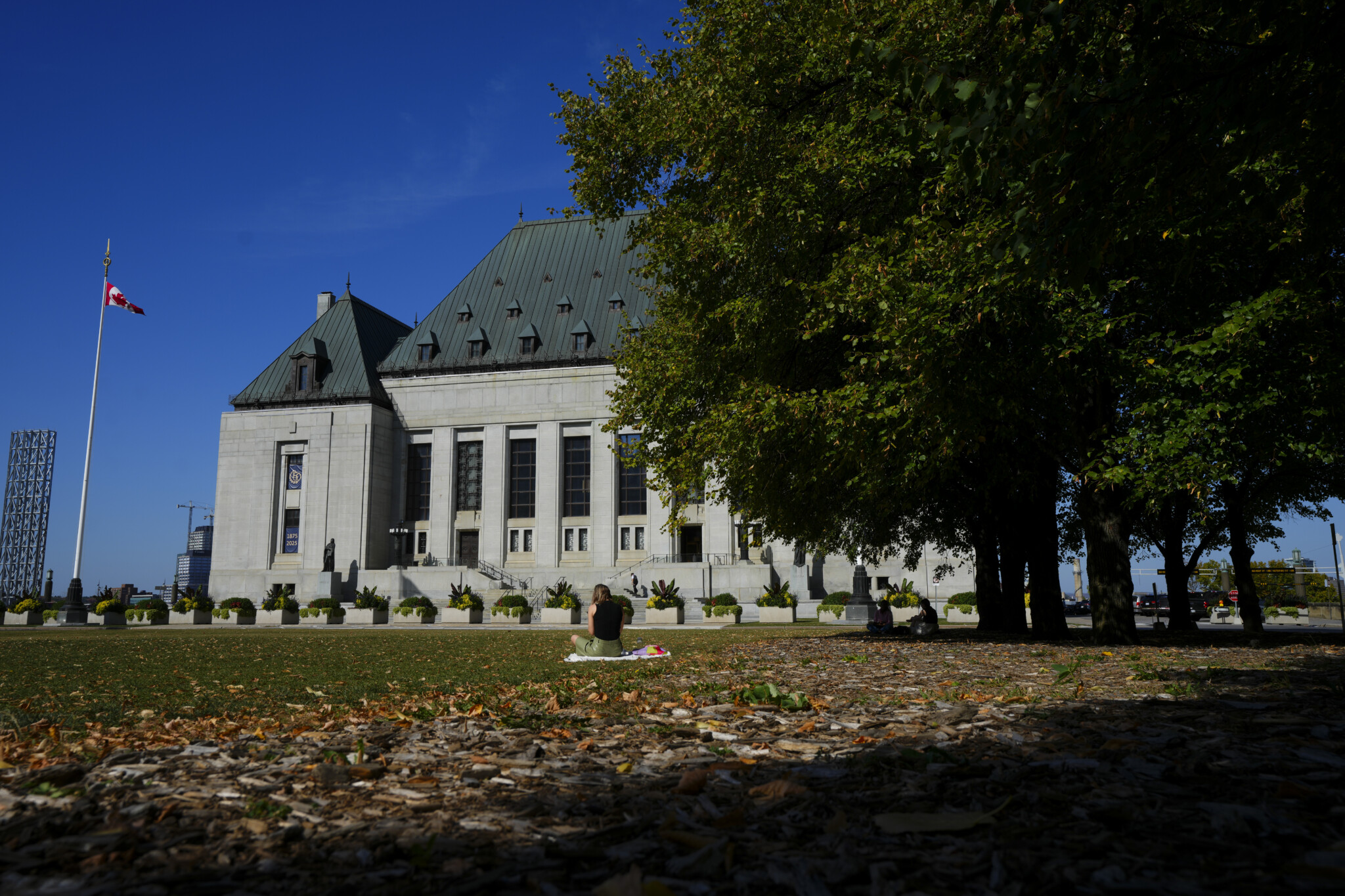The following is part one in a series of pieces examining Charter jurisprudence in Canada, the structural doctrines guiding the Supreme Court of Canada’s rulings, and how critics might go about seeking meaningful, long-lasting reform.
Since the Charter came into effect, the Supreme Court of Canada has articulated a number of principles and doctrines that, taken in their totality, have given it the widest possible scope. Though some are of relatively recent vintage, several of the most significant were created in the Charter’s formative years, laying the foundations for Charter adjudication in the decades that followed. Because of their structural, load-bearing role, those earlier rulings have acquired a canonical status; an aura of untouchability. In this and the next two parts, I want to briefly review some of the key doctrines and make a few observations about their implications for Charter jurisprudence more generally.
Along the way, I also want to say why these doctrinal moves were not inevitable; i.e., that the Supreme Court could have made different decisions that would have been more in keeping with a traditional understanding of the judicial role and with parliamentary sovereignty, and yet would also have been compatible with having a Charter of Rights and Freedoms in the first place. In explaining why and how an alternative vision of Charter litigation could reasonably have been pursued, I will sometimes adopt the voice of the Court’s critics. For my purposes, however, it is unnecessary to persuade everyone that the structural doctrines under examination were in fact wrongly decided; it is enough to sketch, as it were, the case for the prosecution.
Interpretation and the living tree
In 1984, the Supreme Court of Canada decided Hunter v Southam. There, Justice Dickson stated:
The task of expounding a constitution is crucially different from that of construing a statute. A statute defines present rights and obligations. It is easily enacted and as easily repealed. A constitution, by contrast, is drafted with an eye to the future. Its function is to provide a continuing framework for the legitimate exercise of governmental power and, when joined by a Bill or a Charter of Rights, for the unremitting protection of individual rights and liberties. Once enacted, its provisions cannot easily be repealed or amended. It must, therefore, be capable of growth and development over time to meet new social, political, and historical realities often unimagined by its framers. The judiciary is the guardian of the Constitution and must, in interpreting its provisions, bear these considerations in mind. Professor Paul Freund expressed this idea aptly when he admonished the American courts “not to read the provisions of the Constitution like a last will and testament lest it become one.”
It is, of course, true that a constitution is not the same as a statute; that it is entrenched in a way that ordinary legislation is not. It does not follow that interpretations of the Constitution must change over time. On the contrary: Since the point of a constitution is, as Justice Dickson says, to impose limits on government that extend into the distant future, courts arguably show respect for the kind of document that a constitution is by consistently giving it the meaning and construction that it possessed at the time of entrenchment.
Naturally, the law must be capable of evolving and responding to new conditions—societal, technological, environmental, etc. Traditionally, though, it has been the burden and responsibility of legislatures to respond, i.e., through legislation. This is, indeed, a good reason why, as Justice Dickson observes, statutes are “easily enacted and as easily repealed”: It is important that legislatures have room to maneuver, experiment, and double-back when confronted with changing societal circumstances.
An approach to constitutional interpretation that steadily expands Charter guarantees also steadily shrinks the legislature’s room to maneuver, effectively impairing the latter’s ability to provide exactly the sort of dynamic responsiveness that Justice Dickson seems to want. Justice Dickson supposes that, because the Charter extends into the distant future, and because the law must be responsive to changing conditions, it must be the Charter that is capable of responding. On an alternative—at least equally plausible—view, the Charter sets firm, immoveable guardrails, but within those fixed limits leaves it to legislatures to adapt and respond to social crises as they emerge.
Justice Dickson goes on to defend the living tree approach to constitutional interpretation by citing Viscount Sankey’s “classic formulation” in Edwards, what has become known as “The Persons Case.”
The British North America Act planted in Canada a living tree capable of growth and expansion within its natural limits. The object of the Act was to grant a Constitution to Canada… Their Lordships do not conceive it to be the duty of this Board—it is certainly not their desire—to cut down the provisions of the Act by a narrow and technical construction, but rather to give it a large and liberal interpretation.
Now, Viscount Sankey did say this. But the Supreme Court of Canada has exaggerated its significance. Viscount Sankey’s analysis in Edwards was dominated by perfectly ordinary techniques of garden-variety statutory interpretation. To treat his opinion as authority for the proposition that constitutional interpretation can be altogether unmoored from original intent puts a great deal of strain on what he actually said and did. One must keep in mind a critically important difference between interpreting division-of-powers provisions in the BNA Act and interpreting the provisions of the Charter: the former concerns who may legislate on a given matter; the latter concerns whether anyone may legislate on a matter at all.

The Privy Council in Edwards was, I submit, principally concerned that, in the absence of a large and liberal interpretation of a head of power, certain matters might effectively be outside (or treated as outside) the jurisdiction of any legislature at all. To that end, the Privy Council suggested that heads of power must be read in such a way that, despite the emergence of new technologies and developments not in contemplation at the time of the BNA Act’s enactment, there was always someone who could legislate on them. (One can fairly retort that the Privy Council in Edwards was not immediately faced with interpreting a head of power. But having already reached its conclusion by drawing upon quotidian textualist considerations, it was fair to buttress it by raising the point that, when interpreting a constitution like the BNA Act, one would often expect to read terms (most importantly heads of power) in a large and liberal fashion, rather than a cramped, miserly one.)
To take that commonsense proposition, and infer from it that Charter provisions should be interpreted in a large and liberal fashion, such that legislative power would steadily become more and more restricted, is arguably to turn Edwards on its head.
Needless to say, the living-tree approach to Charter interpretation has been the basis for many of the most significant decisions of the Charter era. With that in mind, the tenuous basis for Justice Dickson’s opinion in Hunter is worth considering.
The most prominent alternative to purposivism is, of course, originalism—which a generation of Canadian legal academics has been trained to regard with suspicion. (There are notable exceptions, like Justices Huscroft and Miller, now both on the Ontario Court of Appeal.) But interpretation of any sort of text typically involves looking to the original intentions of its author. In this sense, talk of purposivism often trades, if only implicitly, on originalist sensibilities—for whose purposes should matter if not those of the authors?
Practically speaking, when Charter enthusiasts talk about “purposive interpretation,” they often mean that judges should impose a meaning on this or that Charter right, that they should read it constructively in light of what the Charter ought to protect and what policy outcomes it ought to yield.
People will disagree about what competing moral and political values should inform that construction, and why, but the heart and soul of “living constitutionalism” is the idea that judges are not, and should not be, yoked to the original intentions of those who made the Charter in the first place. Originalism, by contrast, is often thought to have a disciplining, constraining effect on constitutional interpretation—though its own critics, and indeed Justice Barrett of the United States Supreme Court, are not necessarily so sure. (See her recent book.)
As critics and supporters alike acknowledge, the Supreme Court has sometimes engaged in what appear to be, in substance, originalist techniques of interpretation disguised or presented as purposive, living tree interpretation.In particular, see Sirota and Oliphant, “Originalist Reasoning in Canadian Constitutional Jurisprudence” (2017) 50 UBC L Rev 505, https://papers.ssrn.com/sol3/papers.cfm?abstract_id=2749224 With that in mind, one may fairly ask two questions. First, if the Supreme Court is already doing originalism, what does it matter that the Court purports to call it something else? Second, doesn’t this show that the Court is prepared to depart from living tree interpretation—that one can simply seek to persuade the Court itself to reverse course?
The questions are fair, but ultimately wrongheaded. I will start with the second question. The very fact that the Supreme Court continues to label its interpretive approach “purposive” or “living tree” shows its deep reluctance to abandon Hunter. The use of techniques frequently coded as “originalist” or “textualist” under the auspices of “broad purposive interpretation” only indicates that the Court sometimes finds it rhetorically useful to add them to its interpretive toolkit—not that the Court is remotely prepared to tie its hands to the exclusive use of those other tools for the future.
Indeed, a majority of the Court has recently, in Power, expressly committed itself once again to a “generous and expansive” approach to Charter interpretation, citing Hunter v Southam. The idea that the Court is even a little bit interested in truly embracing a more constrained, limited approach to interpretation is, at best, speculative to the point of fanciful. That is all the more unlikely given that the Court could not disavow purposive interpretation without throwing into doubt all of the Charter cases decided on that basis.
This, in turn, ties into my answer to the first question. If techniques of constitutional interpretation are to provide legislatures with stable and predictable guideposts, then the Court must publicly wed itself to those techniques. It is not good enough for the Court to be secretly originalist.
If originalist techniques are to provide the sort of stability and predictability that its proponents want, the Court must say—expressly and full-throatedly—that they are, henceforth, doing originalism and only originalism, and what kind of originalism it is doing. (There is more than one kind.) Otherwise, the Court does not constrain itself one iota. As Sirota and Oliphant observe, the result of doing originalism under the banner of purposivism is just sloppy originalism, not more disciplined purposivism.
In any event, it is simply not true that purposivism or living constitutionalism was the only game in town when the Supreme Court of Canada decided Hunter. There were other options, even if they were not well understood at the time.
A version of this article was originally published on Michael Plaxton’s Substack here. A follow-up, addressing interpretive possibilities other than originalism or living tree constitutionalism, was recently published here.
Should the Supreme Court interpret the Charter strictly or adapt it to modern times?
Does the Supreme Court's use of 'purposive' interpretation hide originalist methods?
How does 'living tree' constitutionalism impact legislative power?












Comments (1)
The constitutional problem is not just which of two or more interpretation philosophies the courts should use in Charter cases. It is also the decline in the concept of the scope and limits of adjudication (see Lon Fuller). Judicial decisions with either originalism or purposiveness have unforeseen and unintended consequences, especially when judicial restraint gives way to judicial hubris.
Under the current living tree principle the judiciary needs to accept that trees don’t grow to the sky and that if all the branches of the tree grow on one side the tree will lean in that direction.